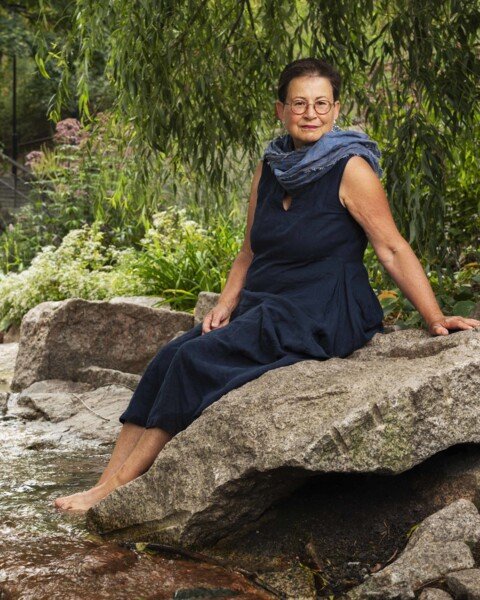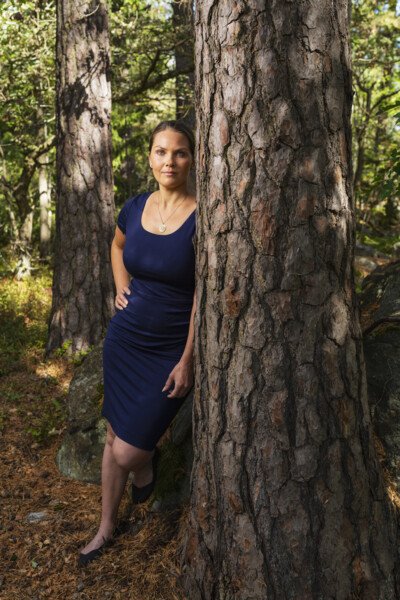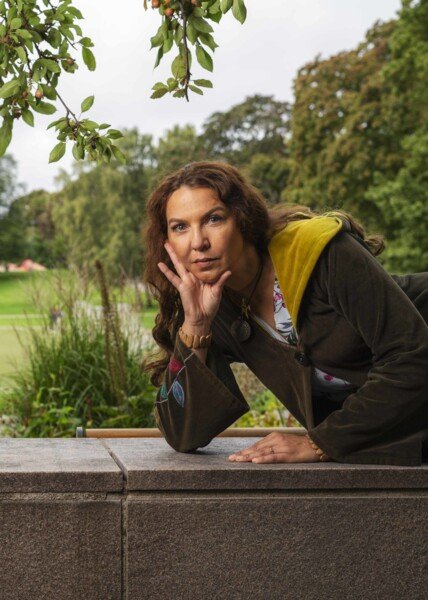They see the value of nature
What is so appealing about nature, and is it good for your health? We spoke to three researchers who study the health benefits of spending time in nature.
“Water makes us happier”
Name: Maria Albin
Title: Professor of Occupational and Environmental Medicine at the Institute of Environmental Medicine, Karolinska Institutet.
Current: Involved in the research project Blue Health (bluehealth2020.eu), which is coordinated from the University of Exeter, UK, and whose Swedish partner is Lund University.

First published in Swedish in the magazine Medicinsk Vetenskap No3/2018.
“Research shows that we appear to feel better and become happier by living near water. Historically, cities have been built near harbours, and therefore many people in the world live close to water. Recently published research shows that the nearness to water areas increases the level of physical activity and the number of social encounters between people.
We also know that space can create a feeling of repose. An ocean has few distractions and seems endless, which, according to environmental psychology research, appears to create a sense of calm. But we do not have an exact understanding of how it affects our health. An EU-project called Blue Health has been initiated to find out more about this. Among other things, we plan to create virtual blue environments to investigate the affect they have on recovery after stress.
We want to investigate if simply seeing water and hearing the sound of it has a stress-reducing effect, as is the case with green open spaces. This sort of treatment could then be offered to older people who have a hard time getting outside or to people who suffer from severe stress when, for example, going to the dentist.
The project will also investigate the importance of making blue open spaces accessible so that they are easier to reach, less littered and safe to visit. Otherwise the positive effects does not seem to work. However, it is important to further the knowledge in this area since it can be used in urban planning.
Over the years, I have mostly studied what is harmful in the environment, but it is also fun to investigate the factors that contribute to our well-being. I do not live near water myself, but I often visit such areas. Resting your eyes on an ocean lifts your spirit. The ocean! I usually exclaim when I see it.”
As told to: Cecilia Odlind
“Nature is a vital resource for recovery”
Name: Cecilia Stenfors
Title: Associate Professor at the Department of Psychology, Stockholm University
Researches: How internal and external factors, including natural and urban environments, affect cognition, recovery, emotional state, stress, and well-being.

“Modern working life often involves being sedentary but having high mental demands. Feeling mentally overloaded and experiencing concentration and memory problems is relatively common.
Conversely, research show that contact with natural environments reduces negative feelings and stress, and promotes positive feelings, mental recovery and performance. Our studies show an increase in performance on attention and memory tests after nature experiences, when compared to urban control environments.
Real natural environments have the most positive effect, but images and videos of nature may also work. However, littered and otherwise ruined nature areas does not appear to have the same effect. In other words, there is a connection between the well-being of nature and individuals.
One theory about nature's effect on us is that it is softly fascinating and catches our attention in a bottom-up fashion, while allowing other more demanding attentional control processes to rest and recover. Other theories emphasize that there are evolutionary reasons for our feelings of well-being in natural environments, especially with high biodiversity, as they provide resources for survival, such as water, food, and shelter.
The natural environment is a vital resource for addressing our public health challenges. I therefore hope that decision-makers and urban planners create more green spaces as well as preserve existing spaces and forests with biodiversity. I also believe that we are in need of more restorative environments in working life. This may involve indoor plants, balconies, and parks for us to be in or around. It should be easy to go outside to recover or to work, for example by taking walk-and-talk meetings. This may also require changes in habits and work culture.”
As told to: Helena Mayer
“The greenery should preferably be just around the corner”
Name: Mare Löhmus Sundström
Title: Researcher at the Institute of Environmental Medicine, Karolinska Institutet.
Researches: The health effects of green areas.

“85 percent of the Swedish population lives in cities, and ours and others research show that green areas are important for recovery and physical activity. People living in urban environments with a lot of greenery are healthier than these who live in areas with less of it. They have lower stress rates, live longer and they are at lower risk of cardiovascular disease, type 2 diabetes and mental illness.
Children who are born and live in green neighbourhoods are at lower risk of low birth weight and obesity later in life. Children playing in areas with a lot of vegetation have also been shown to have better ability to concentrate, better attention and better self-discipline.
Green areas are also needed to cool down cities and to prevent high indoor temperatures during heat waves, which has been shown to reduce mortality. The more vegetation, the lower the risk of flooding during storms and the better the quality of air.
A lot of greenery in the neighbourhood promotes physical activity among local residents, yet research shows that a green open space in the vicinity of a residential area is not enough on its own, since many people do not have the habit of or access to areas like these. The greenery should preferably be just around the corner. For that reason, urban planners must also infill greenery when infilling or building cities. At the same time, people must feel safe in green open spaces, other wise there will be no positive effects.
One of the research projects that I am involved in at the moment investigates whether nature experiences in virtual reality can improve the quality of life for people with physical disabilities, for example in geriatric care. I myself was born in a forest village on the island of Hiiumaa in Estonia, and I feel best when I am in the forest. I can spend hours there.”
As told to: Helena Mayer
